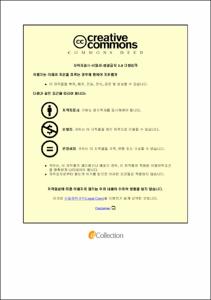Ulsan Univ. Repository
Thesis
General Graduate School
Mechanical & Automotive Engineering
1. Theses (Master)
Development of a Predicting System for Calculating Residual Stress and Deformation in 3D Printed Parts
- Abstract
- Selective laser melting (SLM) is an additive manufacturing (AM) technique that has the potential to produce almost any three-dimensional (3D) metallic part, even those with complicated shapes. Throughout the SLM process, the heat transfer characteristics of the metal powder plays a significant role in maintaining the product quality during 3D printing. Furthermore, due to high heating and cooling rates within the selective laser melting (SLM) process, a high-temperature gradient forms in the heat affected zone, which generates significant residual stresses within the fabricated parts. A precise prediction of residual stresses and deformation is essential to ensure dimensional accuracy and prevent premature fatigue failure, delamination and buckling of 3D printed parts. Therefore, it is crucial for 3D-printing manufacturers to determine the thermal and mechanical behavior over the SLM process. However, it is a significant challenge to accurately determine the large temperature gradient, melt pool size, residual stress build up, and deformation using only experiments. Therefore, the use of both experimental investigations and numerical analysis can provide a better pathway in characterizing the temperature gradients and residual stress development in the SLM process in a more effective manner.
The aim of this research is to develop a three-dimensional (3D) thermo-mechanical coupling model to simulate a multi-track multi-layer SLM process utilizing the finite element method for analyzing the thermal behavior, residual stress, and deformation during selective laser melting (SLM) of Ti6Al4V. Moving heat source and temperature dependent material properties were used to the heat transfer model for getting well founded prediction results. In the experiments, a TELOPS FAST-IR (M350) thermal imager was applied to determine the temperature profile of the melting pool and powder bed along the scanning direction during the SLM fabrication using Ti6Al4V powder. Through the simulation, an effective prediction method for investigating the effects of process parameters such as the laser power and scanning speed on the temperature distribution, residual stress, and deformation was established. The numerically calculated results were compared with the experimentally determined temperature distribution. The comparison showed that the calculated peak temperature for single- and multi-track by the developed thermal model was in good agreement with the experiment results. Secondly, the developed model was verified by comparing the melting pool size for various laser powers and scanning speeds with the experimentally measured melting pool size from the published literature. The developed model could predict the melt pool width (with 2–5% error) and melt pool depth (with 5–6% error). The findings showed that the development of residual stress on the fabricated parts gradually increased throughout the SLM process, produced by a heat accumulation effect. Moreover, the model was capable of accurately predicting the trends in deformation for varying the SLM process parameters.
This work demonstrates a unique way to understand the effect of SLM process parameters on the temperature evolution, underlying phenomenon of residual stress development as well as deformation behavior within the SLM process.
- Issued Date
- 2020
- Awarded Date
- 2020-02
- Type
- Dissertation
- Affiliation
- 울산대학교
- Department
- 일반대학원 기계자동차공학과
- Advisor
- Prof. Lee Chang Myung
- Degree
- Master
- Publisher
- 울산대학교 일반대학원 기계자동차공학과
- Language
- eng
- Rights
- 울산대학교 논문은 저작권에 의해 보호받습니다.
- Appears in Collections:
- Mechanical & Automotive Engineering > 1. Theses (Master)
- 파일 목록
-
-
Download
 200000288334.pdf
기타 데이터 / 4.23 MB / Adobe PDF
200000288334.pdf
기타 데이터 / 4.23 MB / Adobe PDF
-
Items in Repository are protected by copyright, with all rights reserved, unless otherwise indicated.